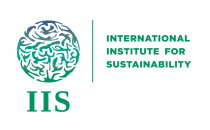Publications > Article
Achieving cost-effective landscape-scale forest restoration through targeted natural regeneration
Forest restoration has the potential to neutralize some of the negative effects of development on environmental systems, as mitigating climate change, promoting biodiversity habitat, sustainable livelihoods for people, among other benefits.
However, an “active restoration”, such as tree planting and soil preparation, often presents high costs to achieve large-scale forest restoration, emphasizing the need of identifying and evaluating alternatives that are more economical, to not be a barrier to decision-makers on achieving global forest restoration goals.
In this sense, a natural forest restoration can be more economical than planting trees, however, its potential in promoting restoration on a scale is little known. In this study, we predict, map and quantify the potential for natural restoration in a deforested land in the Brazilian Atlantic Forest,
which presents considerably lower costs compared to the active restoration, showing that natural restoration planning is the key to carrying out a expansion in large economic scale.



